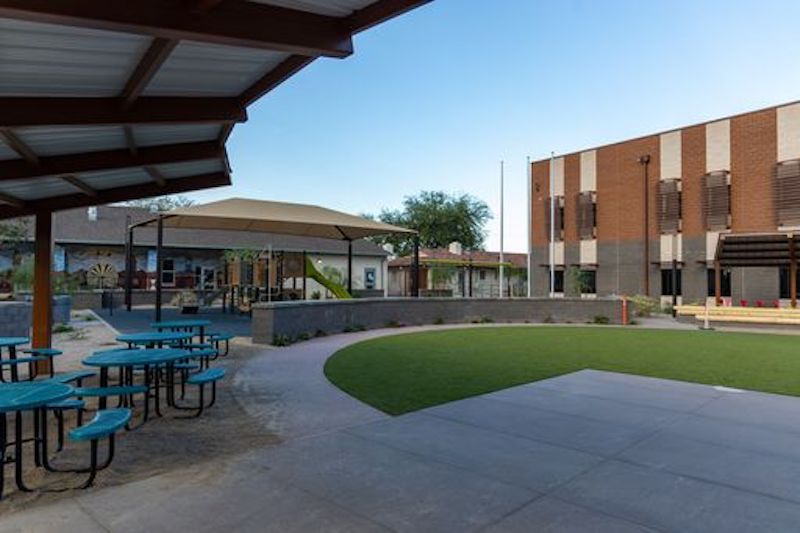Construction on the new Blackwater Community School, a two-story structure on the Gila River Indian Community, located southeast of Phoenix, Ariz., was completed on August 31. The school serves pre-school, the Family And Child Education Program (F.A.C.E.), and a K-5 grade school.
The two-year-long build on the 7.43-acre campus was in conjunction with Rosendin, the nation’s largest employee-owned electrical contracting company, along with Gilbane Building Company and design partner Breckenridge Group.
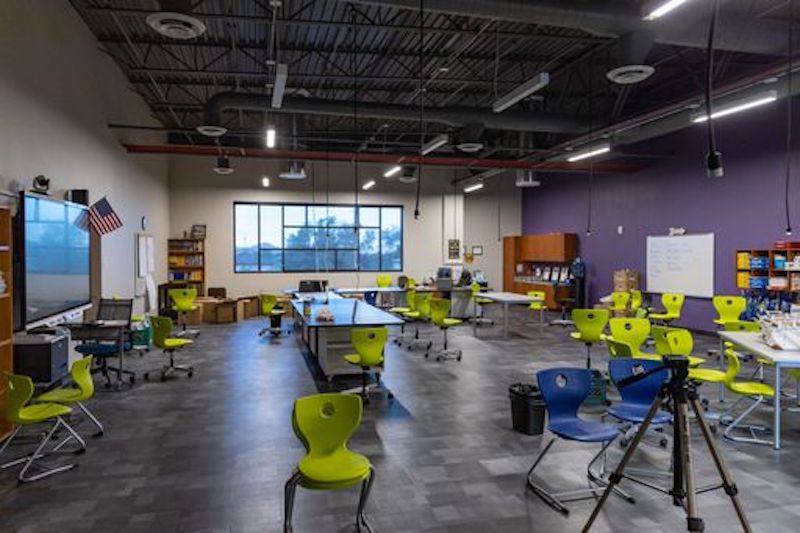
The $25 million replacement campus incorporates culturally significant artwork throughout the two-story classroom building, media center, multipurpose building, and cafeteria. The Blackwater Community School Culture Committee provided the insight for the cultural art in partnership and with the approval of the Blackwater Community School Board. Rosendin’s team worked on lighting, playground areas, basketball courts, sports fields, and reading patios.
The Blackwater Community School serves two distinct tribes: the Akimel O’Otham, who can trace their ancestry to the Hohokam; and the Pee Posh, who come from Yuma ancestry.
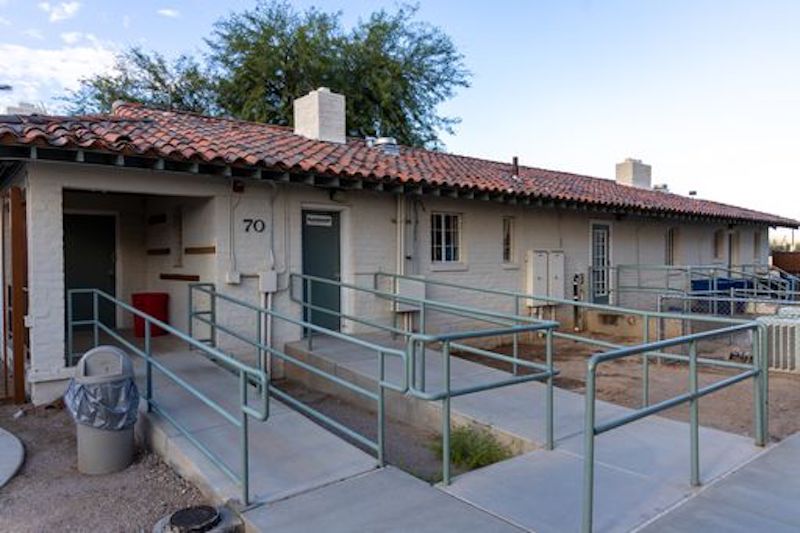
“The Blackwater Community School is the heart of the community and celebrates the Gila River Indian Community’s heritage throughout the year,” said Jagdish (Jack) Sharma, Principal of Blackwater Community School. “Agriculture is at the heart of the Akimel O’Otham culture. Our educators take pride in our quality educational practices and the presences of tradition’s. This is the reason why traditional symbols of the culture are placed throughout the new campus.”
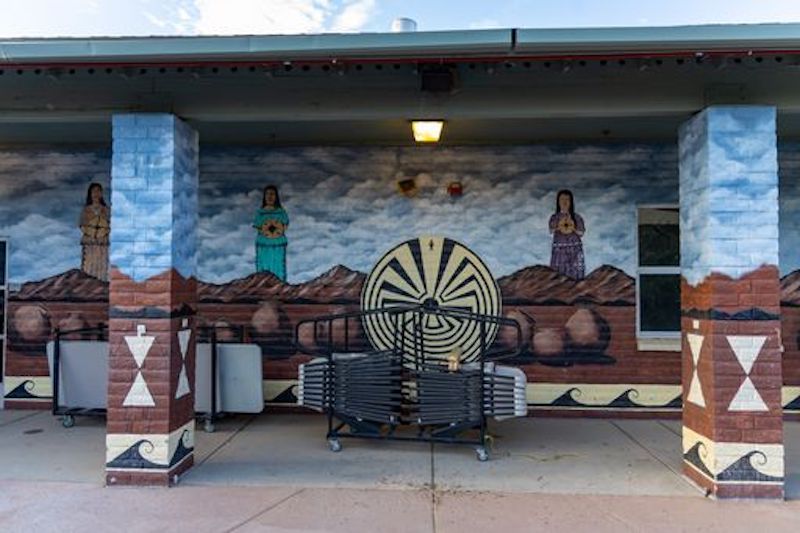
The Hohokam made contributions to the earliest forms of technology in the Southwest with the introduction of agriculture, irrigation canals, and extensive trade networks. Exterior and Internal murals throughout the campus depict those contributions with scenes of crop harvesting, desert landscapes, and petroglyphic symbols like the Man in the Maze, or Se:he. A shade structure has been built with metal shaped to look like cactus ribs, a material the Akimel O’Otham would use to build communal gathering space ramadas.
“There is a blue and pink mural in one of the hallways depicting the desert at night," said Sharma, speaking to the Blackwater Community School Culture Committee’s interpretation of the artwork. "Blackwater’s name comes from the standing water getting dark with night. In the glow of the moon, fish would appear. In the moon, there are two flute players, a reference to 'Man of the Maze.' There are murals like this all over campus that reflect our student’s culture enriching their overall learning experience,”
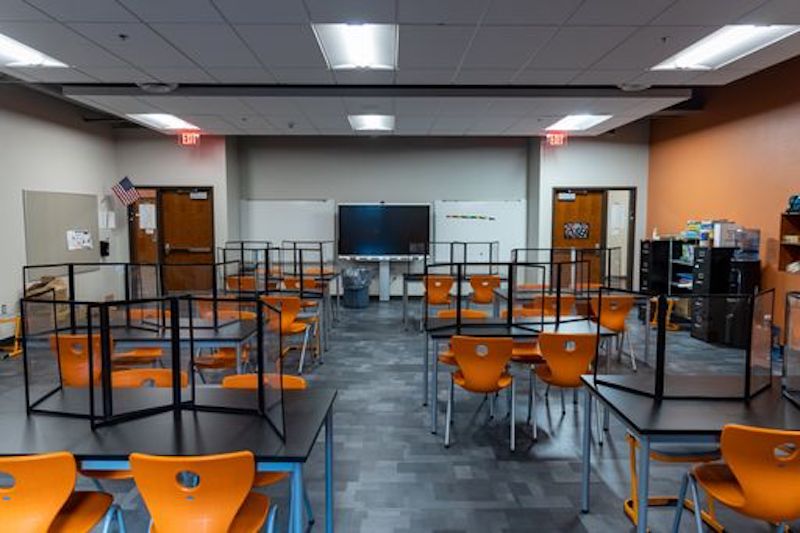
The school was originally built in 1939 and in 2018, received through other different funding sources, and Gila River Community Council, Bureau of Indian Affairs (BIA), monies for a replacement school.
“Rosendin is proud to have built the new elementary school in the Gila River Indian Community to give students the very best environment to learn and grow,” said Ben Miller, Rosendin Division Manager. “The school will serve as the hub of the larger community and support family education and culture in the local area."
The two-year campus build required an aggressive phasing schedule to implement construction while school was in session. Parts of the project were scheduled over winter and summer breaks to mitigate disruption to students.
“Blackwater Community School will serve as a pivotal gathering and educational spot for children and adults on the Gila River Indian Community," said Jeff Keck, Senior Project Executive, Gilbane Building Company. Gilbane is proud to work with Rosendin and other trade partners to have safely built a new campus to support this community’s families, cultures and traditions,”
ABOUT ROSENDIN
Rosendin, headquartered in San Jose, Calif., is the largest employee-owned electrical contractor in the United States, employing over 7,000, with revenues of $2 billion. Established in 1919, Rosendin remains has built quality electrical and communications installations for morethan a century. More information at: www.rosendin.com
ABOUT GILBANE BUILDING COMPANY
Gilbane provides a full slate of construction and facilities-related services – from pre-construction planning and integrated consulting capabilities to comprehensive construction management, general contracting, design-build, and facility management services. Founded in 1870 and still a privately held, family-owned company, Gilbane has more than 45 office locations worldwide. More information at: www.gilbaneco.com.
Related Stories
| Aug 11, 2010
High School in a Hurry
One of the more compelling arguments for charter schools is their theoretical ability to streamline decision making. Eliminate all those layers of bureaucratic fat that clog the arteries of most public school systems, the argument goes, and decisions can be made to flow much more smoothly, even when it comes to designing and building a major school project.
| Aug 11, 2010
Bronze Award: Garfield High School, Seattle, Wash.
Renovations to Seattle's historic Garfield High School focused mainly on restoring the 85-year-old building's faded beauty and creating a more usable and modern interior. The 243,000-sf school (whose alumni include the impresario Quincy Jones) was so functionally inadequate that officials briefly considered razing it.
| Aug 11, 2010
Managing the K-12 Portfolio
In 1995, the city of New Haven, Conn., launched a program to build five new schools and renovate and upgrade seven others. At the time, city officials could not have envisioned their program morphing into a 17-year, 44-school, $1.5 billion project to completely overhaul its entire portfolio of K-12 facilities for nearly 23,000 students.
| Aug 11, 2010
Financial Wizardry Builds a Community
At 69 square miles, Vineland is New Jersey's largest city, at least in geographic area, and it has a rich history. It was established in 1861 as a planned community (well before there were such things) by the utopian Charles Landis. It was in Vineland that Dr. Thomas Welch found a way to preserve grape juice without fermenting it, creating a wine substitute for church use (the town was dry).
| Aug 11, 2010
School Project Offers Lessons in Construction Realities
Imagine this scenario: You're planning a $32.9 million project involving 112,000 sf of new construction and renovation work, and your job site is an active 32-acre junior-K-to-12 school campus bordered by well-heeled neighbors who are extremely concerned about construction noise and traffic. Add to that the fact that within 30 days of groundbreaking, the general contractor gets canned.
| Aug 11, 2010
High Tech High International used to be a military facility
High Tech High International, reconstructed inside a 1952 Navy metal foundry training facility, incorporates the very latest in teaching technology with a centerpiece classroom known as the UN Theater, which is modeled after the UN chambers in New York. The interior space, which looks more like a hip advertising studio than a public high school, provides informal, flexible seating areas, abunda...
| Aug 11, 2010
High-Performance Modular Classrooms Hit the Market
Over a five-day stretch last December, students at the Carroll School in Lincoln, Mass., witnessed the installation of a modular classroom building like no other. The new 950-sf structure, which will serve as the school's tutoring offices for the next few years, is loaded with sustainable features like sun-tunnel skylights, doubled-insulated low-e glazing, a cool roof, light shelves, bamboo tri...
| Aug 11, 2010
Special Recognition: Pioneering Efforts Continue Trade School Legacy
Worcester, Mass., is the birthplace of vocational education, beginning with the pioneering efforts of Milton P. Higgins, who opened the Worcester Trade School in 1908. The school's original facility served this central Massachusetts community for nearly 100 years until its state-of-the-art replacement opened in 2006 as the 1,500-student Worchester Technical High School.
| Aug 11, 2010
BIM school, green school: California's newest high-performance school
Nestled deep in the Napa Valley, the city of American Canyon is one of a number of new communities in Northern California that have experienced tremendous growth in the last five years. Located 42 miles northeast of San Francisco, American Canyon had a population of just over 9,000 in 2000; by 2008, that figure stood at 15,276, with 28% of the population under age 18.
| Aug 11, 2010
8 Tips for Converting Remnant Buildings Into Schools
Faced with overcrowded schools and ever-shrinking capital budgets, more and more school districts are turning to the existing building stock for their next school expansion project. Retail malls, big-box stores, warehouses, and even dingy old garages are being transformed into high-performance learning spaces, and at a fraction of the cost and time required to build classrooms from the ground up.


